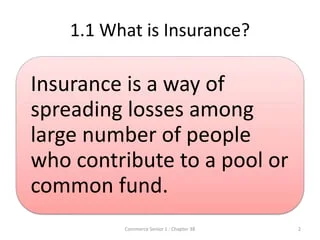9 Simple Techniques For Pacific Prime
9 Simple Techniques For Pacific Prime
Blog Article
Pacific Prime - Questions
Table of ContentsThe Basic Principles Of Pacific Prime The Best Strategy To Use For Pacific Prime3 Simple Techniques For Pacific PrimeIndicators on Pacific Prime You Should Know
In many states, the insurance firm is called for to send you a copy of the adjustments to your plan. It is vital that you review Endorsements or Riders so you recognize just how your plan has transformed and if the policy is still appropriate to satisfy your demands. To acquire a copy of your insurance coverage policy, please contact your insurance policy agent or company.
The Institute of Medication (IOM) Board on the Consequences of Uninsurance launches a prolonged examination of evidence that addresses the significance of medical insurance coverage with the publication of this report. Protection Issues is the first in a series of six reports that will be issued over the next 2 years recording the fact and effects of having actually an approximated 40 million individuals in the USA without medical insurance coverage.

Pacific Prime Fundamentals Explained
The goal of this collection of research studies is to refocus plan focus on a historical issue. Adhering to the lengthiest financial expansion in American history, in 1999, an approximated one out of every 6 Americans32 million adults under the age of 65 and greater than 10 million childrenremains uninsured (Mills, 2000).
:max_bytes(150000):strip_icc()/basics-to-help-you-understand-how-insurance-works-4783595_final-9cf74d5b66d14f88a21ab29ddb290e2d.png)
10 percent of the population accounts for 70 percent of health and wellness care expenditures, a relationship that has actually stayed consistent over the previous three years (Berk and Monheit, 2001) - international travel insurance. Hence medical insurance remains to serve the function of spreading danger even as it increasingly funds regular care. From the viewpoint of healthcare companies, insurance coverage lugged by their clients aids safeguard an income stream, and communities profit from financially practical and secure health and wellness care specialists and establishments
Government provides medical insurance to populaces whom the personal market may not serve successfully, such as impaired and senior citizens, and populaces whose accessibility to health care is socially valued, such as children and pregnant women. The ultimate ends of wellness insurance coverage for the individual and communities, consisting of workplace communities of employees and companies, are improved wellness end results and lifestyle.
The Only Guide to Pacific Prime
Staff members rank medical insurance first by far in value among all the benefits provided in the workplace (Salisbury, 2001). Although there have actually been substantial financial investments of personal and public funds to provide wellness insurance policy, numerous individuals still have no insurance coverage. Regardless of extensive coverage of study searchings for and wellness treatment study results, the public continues to be overwhelmed and mistaken concerning Americans without wellness insurance policy and the ramifications of lacking protection.

Without question, the complexity of American wellness treatment financing systems and the wide range of sources of information include to the general public's confusion and apprehension about medical insurance data and their interpretation. This record and those that will adhere to aim to distill and present in conveniently reasonable terms the substantial study that births on questions of medical insurance protection and its importance.
Fifty-seven percent of Americans surveyed in 1999 thought that those without medical insurance are "able to get the care they require from physicians and hospitals" (Blendon et al., 1999, p. 207). In 1993, when nationwide attention was concentrated on the issues of the without insurance and on pending health and wellness care regulations, just 43 percent of those surveyed held this belief (Blendon et al., 1999).

They additionally obtain less preventative solutions and are much less likely to have regular care for persistent problems such as high blood pressure and diabetic issues. Chronic illness can result in costly and disabling problems if they are not well managed (Lurie et al., 1984; Lurie et al., 1986; Ayanian et al., 2000). One nationwide study asked greater than 3,400 grownups concerning 15 extremely major or morbid problems.
Getting The Pacific Prime To Work
Added evidence is presented later on in this phase in the discussion of insurance coverage and accessibility to healthcare. https://pacificpr1me.carrd.co/. Individuals without wellness insurance policy are young and healthy and balanced and select to do without insurance coverage. Practically fifty percent (43 percent) of those surveyed in 2000 thought that people without medical insurance are most likely to have illness than people with insurance
Voters and plan manufacturers in emphasis team discussions identify those without insurance policy as young individuals that have the chance to be covered and feel they do not need it (Concierge Novelli, 2001). Compared to those with a minimum of some personal protection, the uninsured are less likely to report remaining in outstanding or great health and wellness (Agency for Medical Care Research Study and Top Quality, 2001).
SOURCE: Facility for Cost and Funding Studies, Agency for Medical Care Study and Quality, based on MEPS information. find more information Young adults in between 19 and 34 are much more most likely to do not have wellness insurance policy than any other age. This is chiefly since they are much less commonly qualified for employment-based insurance due to the nature of their task or their brief period in it.
The perception that people without insurance coverage have better-than-average wellness follows from perplexing the reasonably young age profile of the uninsured with the far better health, typically, of younger individuals. This covers the link between health and wellness standing and medical insurance. For those without access to office medical insurance, poor health is a possible barrier to acquiring nongroup insurance coverage since such insurance coverage may be extremely valued, omit preexisting problems, or be just not available.
Report this page